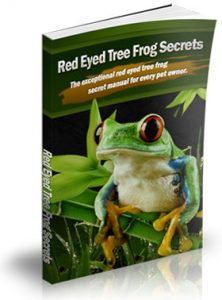Perhaps you are looking for a pet as a companion, but you have never had one before. Maybe you seek the perfect pet to teach your young children some responsibility. Instead of starting with a large creature that requires a lot of maintenance, such as a cat or dog, consider bringing an amphibian into your home.
While most people do not immediately think of amphibians when searching for their starter pet, they should. Many amphibians are easy to take care of, and their unique looks fascinate children. Keep reading to learn what the easiest amphibians to care for are.
The Best Amphibians for New Owners
There are many options for new owners seeking an amphibian that is easy to care for. However, be wary of misinformation about these fascinating creatures. Here are the best broad categories of amphibian pets for new owners and some specific species that may be ideal for you.
Salamanders
Generally, salamanders tend to avoid health problems, and they will not suffer if it takes you a few tries to set up their tank. Most of their care entails cleaning their tanks and feeding them. They eat insects, which you or your child can drop into their tank. Salamanders need water to keep their skin moist, and they love to swim. The easiest way to maintain a salamander tank is to add a filter for the water, though it will still need to be cleaned and replaced about once a week.
Axolotls are a water-specific species of salamander that look fascinating with their fanning gills, and their tanks can have a bare bottom. These salamanders need live food like guppies or krill, but these should still be dropped in. Also, while Axolotls are easy to care for, and children typically think they look cool, these salamanders cannot be held.
Toads
While toads mostly need to be fed two or three times a day and have their cages cleaned weekly, they thrive on routine and will wait for you to provide them if you stick to a regular feeding schedule. They eat insects like crickets.
Toads can be picked up, but be sure to wear gloves, as the chemicals in your skin can harm them, and the toxins toads secrete can hurt you. They also do not like to be held very much. As with salamanders, toads need constantly clean water. Like the Axolotl, so long as you or your children are content to observe toads mostly, they can make for great pets.
Once again, like Axolotls, Fire-Bellied Toads are an excellent pet for people who want a primarily aquatic pet and vastly more interesting to watch than most fish. These toads look striking, with vibrant red or yellow and black stomachs or back patterns. They do not need much heat or specific lighting. Fire-Bellied Toads can also briefly be held with gloves, unlike the Axolotl.
Frogs
As with salamanders and toads, clean water is the primary responsibility for caring for a frog. Frogs are more likely to become ill than salamanders or toads, but they also usually have a more spartan diet. Most frogs eat insects like earthworms or crickets, but this varies by species. Many frogs like to climb, and these frogs should have enclosures that allow for them. Also, some frogs should not be held without gloves due to toxins, like toads. However, many types of frogs can be stored.
If you are seeking an amphibian that can be held and is not primarily water-bound, the White Tree Frog is a great choice. These lovely frogs are generally white and light green or blue. They may grow up to five inches long, and although they can climb, they tend to be lazy. However, they do need large enclosures for these reasons.
Conclusion
If you or your children want a pet that is easy to care for, look into acquiring a salamander, toad, or frog. Children can help feed aquatic amphibians, as their food typically only needs to be dropped into their cage. The same applies to most salamanders.
Some salamanders and frogs, as well as all toads, should not be held at all or only sparingly and with gloves. They all need clean water to submerge themselves in, typically the most significant part of caring for them. Axolotls and Fire-Bellied Toads are amazing amphibians if you want a water-bound pet that is cool to observe. White Tree Frogs can be held and are not confined to water.





